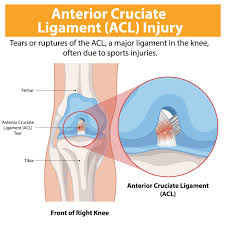Understanding ACL Injury: Prevention and Treatment Options

Introduction
An ACL injury, or anterior cruciate ligament injury, is a significant concern, particularly in sports such as football, basketball, and skiing. The anterior cruciate ligament is crucial for knee stability and functionality, and injuries can lead to long-term complications if not managed correctly. Given the rise in sports participation and competitive leagues, understanding ACL injuries and their management has become increasingly relevant.
What is an ACL Injury?
The ACL is one of the key ligaments that help stabilize the knee joint. An ACL injury typically occurs when the ligament is torn, which can happen from sudden stops, jumps, or changes in direction. These injuries are common among athletes, particularly those engaging in high-impact sports. An estimated 200,000 ACL injuries occur in the United States each year, affecting individuals of all ages and athletic backgrounds.
Causes of ACL Injuries
Several factors can contribute to an ACL injury, including:
- Sports Participation: Engaging in activities that strain the knee is a primary cause of ACL injuries.
- Improper Technique: Poor form during physical activities can increase injury risk.
- Previous injuries: Individuals who have previously injured their ACL are at a higher risk of re-injury.
- Gender: Studies indicate female athletes are more susceptible to ACL injuries compared to their male counterparts, often due to anatomical differences.
Symptoms and Diagnosis
Common symptoms include a “popping” sound at the time of injury, severe swelling, and instability in the knee. Diagnosis typically involves a physical examination and may include imaging tests such as MRI to confirm the injury’s extent.
Treatment Options
Treatment for ACL injuries can vary based on the injury’s severity and the individual’s activity level. Options may include:
- Conservative Management: For minor tears, rest, ice, compression, and elevation (RICE) can be effective, often coupled with physical therapy.
- Surgical Intervention: Severe tears may require reconstruction surgery, followed by a lengthy rehabilitation process.
- Rehabilitation: Regardless of the treatment, a tailored rehabilitation programme is critical for regaining strength and stability.
Conclusion
ACL injuries remain a prevalent issue for athletes and active individuals. Understanding the risk factors, symptoms, and treatment options can aid in both prevention and recovery. With continued advancements in sports medicine, techniques for injuring assessment and management are expected to improve, offering hope for more effective outcomes. Athletes must prioritise proper training techniques and injury prevention strategies to reduce the risk of ACL injuries moving forward.









